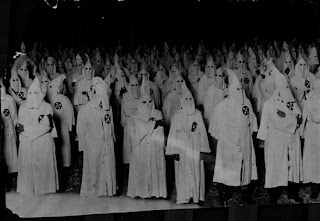Henry McNeal Turner was a minister from South Carolina, who was born on
February 1, 1834. In 1867, He was elected to the Georgia General Assembly.
African Americans were happy for him because this was a sign that blacks were
making progress in society. Although, that all changed when McNeal and the
other black members were banished from the group by the white Democrats. The
white men believed that even if African Americans now had the right to vote,
they didn’t have the right to be a part of what they were voting for. After a
lot of protesting and arguments, Henry McNeal and the other black legislators
were allowed to come back to their positions.
If
you thought Henry McNeal’s situation was bad, wait until you hear about the Ku
Klux Klan (also known as KKK). The club started out as a secret society after
the Civil War, but later became publicly known. They were also recognized as
the first domestic terrorists in the U.S. The Ku Klux Klan hated blacks, but
additionally hated anyone who agreed with African Americans and Radical
Republicans. The goal was to stop blacks from being able to cote, but
progressed into no blacks at all. The KKK did anything they could to make their
lives miserable. They burned houses, took away black rights, and made black people
live in constant fear. To put it simply and on easy terms, the KKK was like a
group of bullies in a school. They follow you around in the hallway, steal your
lunch money, hurt you physically and emotionally, and damage your belongings.
*Henry McNeal Turner*
*Original Photo of Ku Klux Klan*
*Ironic Symbol of Ku Klux Klan*
Sources
*http://www.georgiaencyclopedia.org/nge/Article.jsp?id=h-632
*http://en.wikipedia.org/wiki/Henry_McNeal_Turner
*http://dixie.christogenea.org/node/389
*http://skyvalleychronicle.com/





















